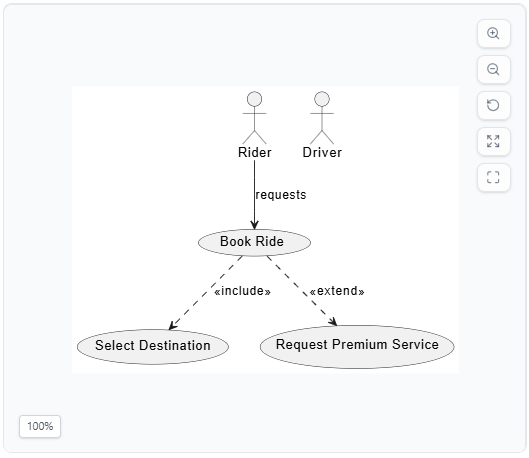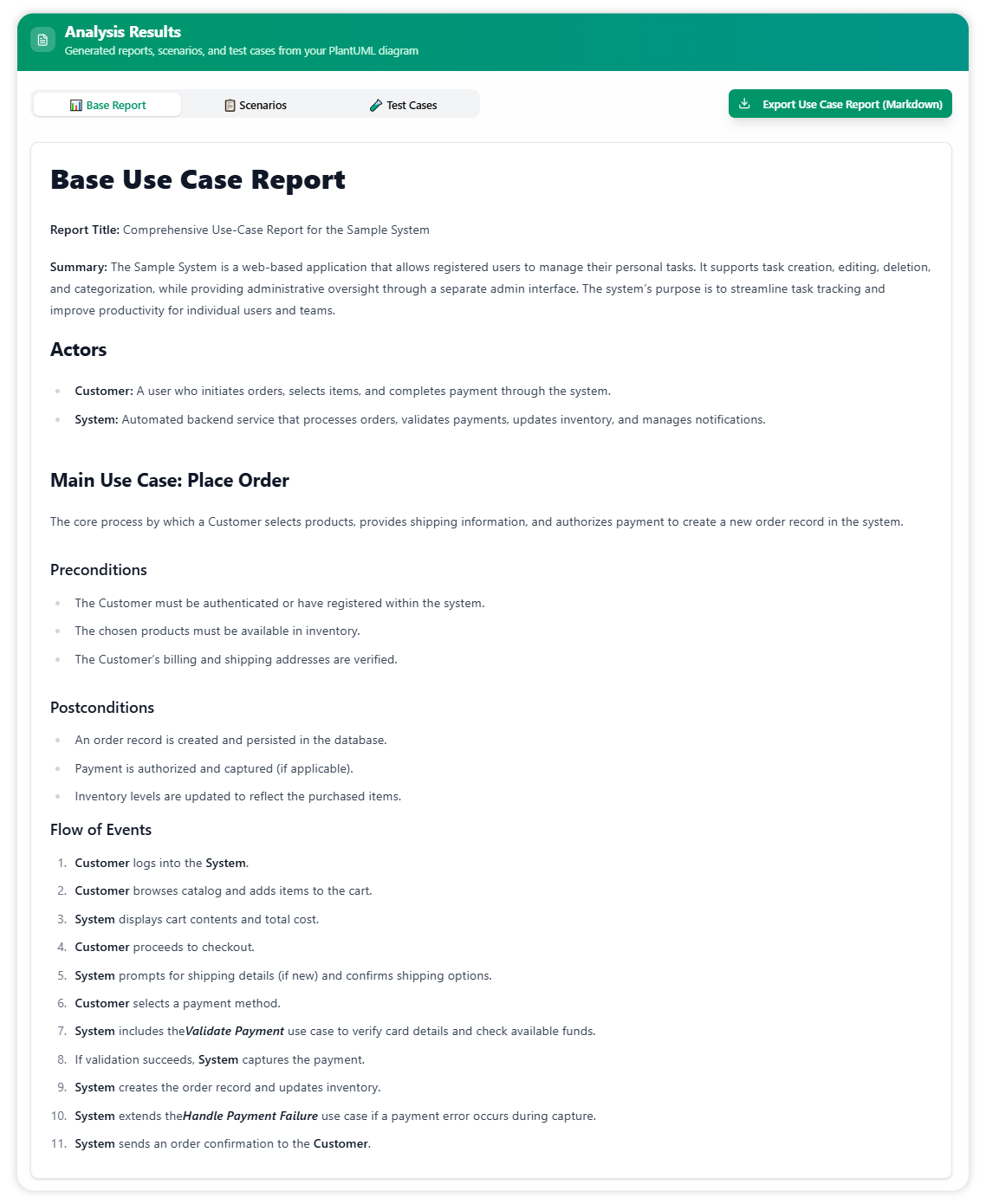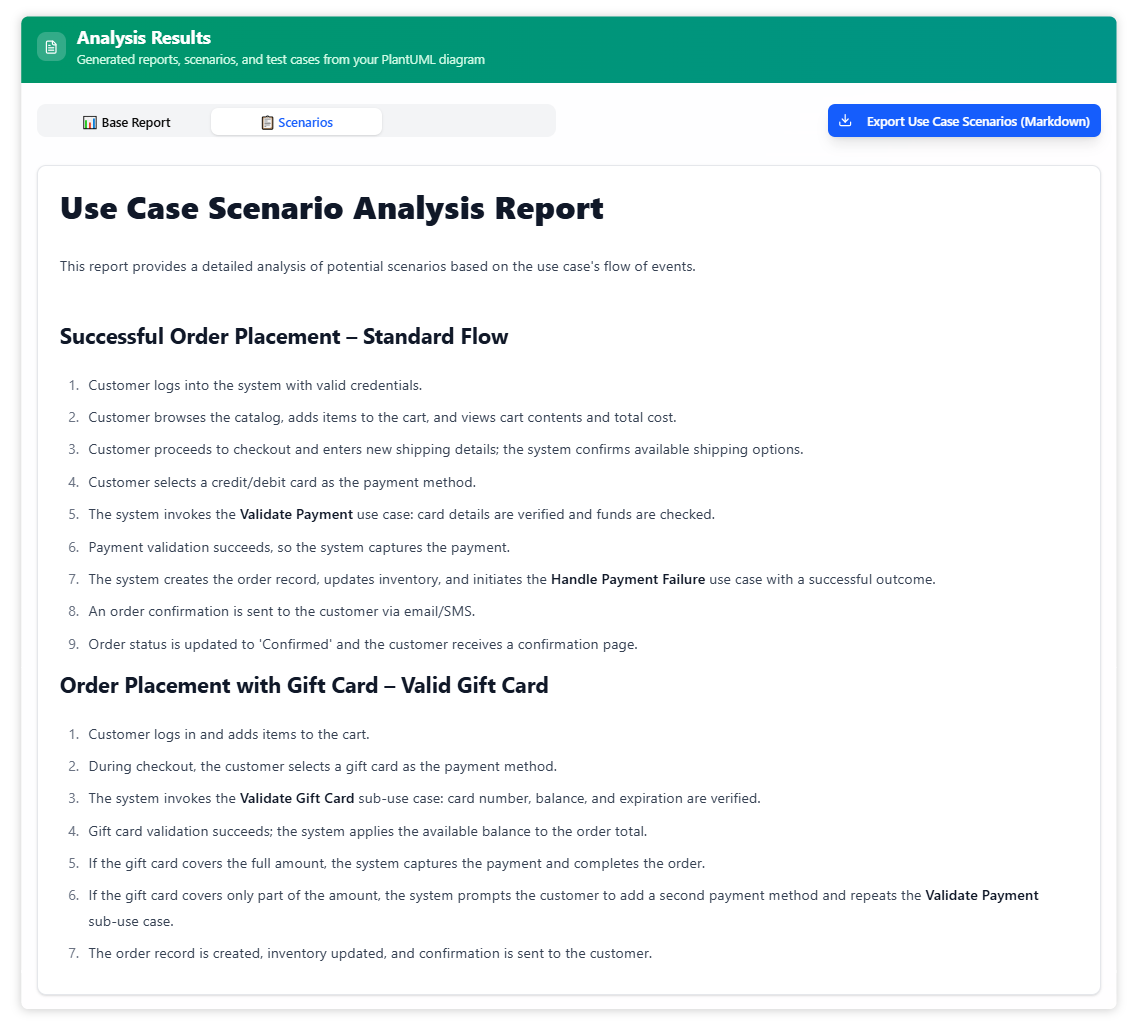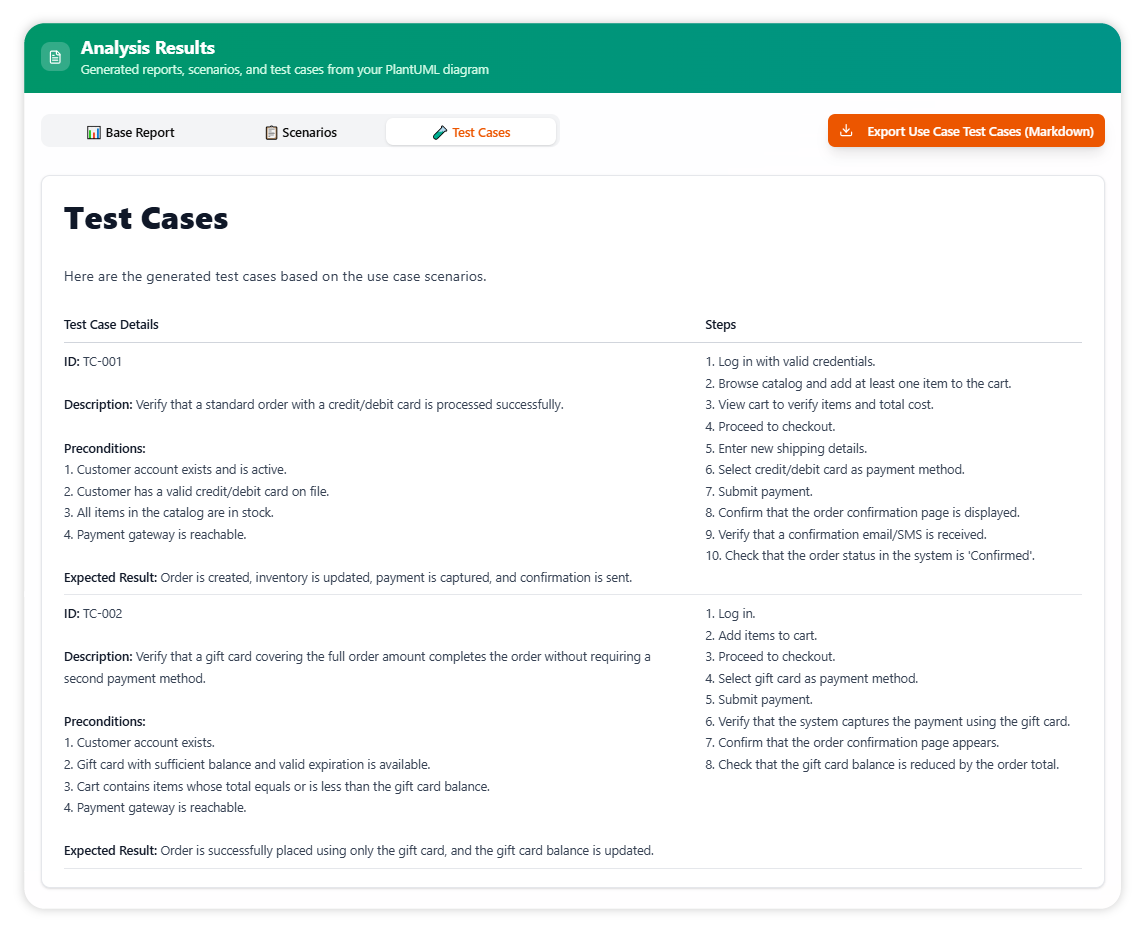Now Reading: Base Use Case Diagram Example: Transport
-
01
Base Use Case Diagram Example: Transport
Base Use Case Diagram Example: Transport
Learn how to transform a PlantUML diagram for a Ride Booking Application into project artifacts with this guide.
1. Input the PlantUML Code
Paste the PlantUML code into the editor. Check the live preview showing the Rider requesting Book Ride, including Select Destination and optionally extending to Request Premium Service. Focus on this use case; refine with the companion app if needed. Click “Generate Report” to proceed.
@startuml actor Rider actor Driver Rider --> (Book Ride) : requests (Book Ride) ..> (Select Destination) : <<include>> (Book Ride) ..> (Request Premium Service) : <<extend>> @enduml

2. Generate the AI Report
The AI analyzes actors (Rider, Driver) and relationships (includes, extends). The report summarizes ride booking, lists actors, details flows (preconditions, post-conditions, alternatives, exceptions like no drivers), and covers sub-use cases. Export as Markdown for sharing.

3. Generate Scenarios
Click “Generate Scenarios” to create narratives like Basic Ride Booking or Premium Ride Request. These support user stories and testing alignment.

4. Generate Test Cases
Click “Generate Test Cases” to produce tests with ID, description, preconditions, steps, and expected results. These integrate with QA tools for robust ride booking testing.


